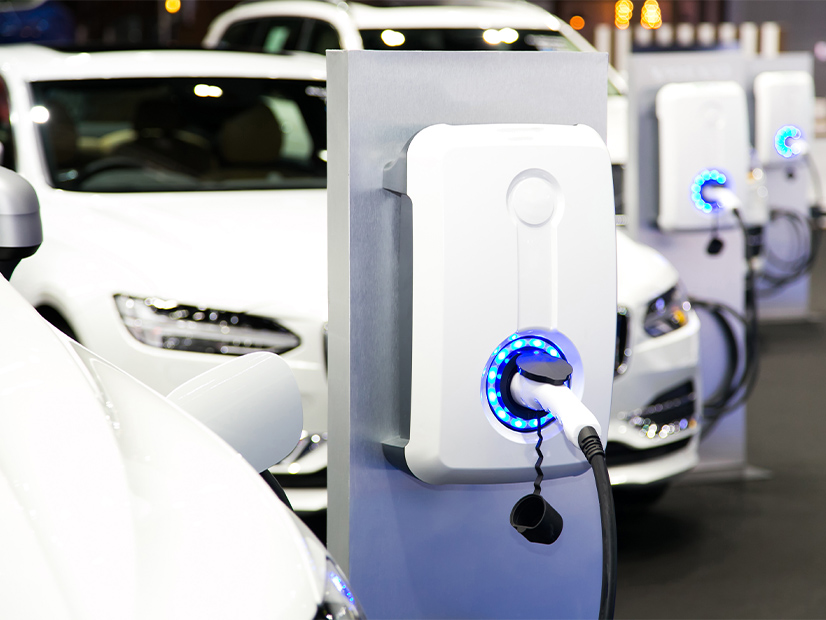The Pennsylvania Department of Environmental Protection (DEP) has awarded incentives of $5.4 million for electric vehicle purchases and the installation of 54 direct current fast chargers (DCFCs) as the state plans how to spend another $25.4 million in federal funds allocated last week to get more EV chargers on its key highways.
Pennsylvania was among the first 35 states to have its EV charger plan approved for funding under the National Electric Vehicle Initiative (NEVI) program, funded by the Infrastructure Investment and Jobs Act (IIJA).
With $2 million in state funds available for purchase incentives, the DEP has increased the maximum rebate available under the Alternative Fuel Vehicle Rebate Program (AFV) from $750 to $3,000. The department expects the latest tranch of funds to put an additional 1,000 EVs on the road in a strategy that it says is aimed at working-class households.
It also announced on Sept. 8 that it has awarded $3.4 million from the state’s share of the Volkswagen settlement to fund the installation of fast chargers in 16 high-traffic locations under the state’s Driving PA Forward DC Fast Charging Grants program. DCFCs, which can charge a battery electric vehicle to 80% in 20 to 60 minutes, will be installed on several corridors across the state, with charging stations available only every 50 miles.
“DEP continues to work strategically to support Pennsylvanians’ growing interest in zero-emission electric vehicles,” acting Secretary Ramez Ziadeh said in announcing the awards. “By reducing nitrogen oxide, carbon monoxide, particulate matter, carbon dioxide and other pollutants from the transportation sector, we make the air quality healthier in our communities, while helping to slow down climate change and its impacts.”
The department’s shift toward offering greater support for lower-income EV buyers follow its 2020-2021 report on the AFV program released in May showing that of 995 grants awarded that year just 21 residents were eligible for an extra incentive of $1,000.
Under the new rules, buyers whose household income is below 400% of the federal poverty level are eligible for a $2,000 incentive, and those with incomes of 200% of the poverty level would be eligible for an additional $1,000. That means, for example, that a family of two with a household income of $69,000 is eligible for a $2,000 rebate, but a family of two with a household income of $35,000 would be eligible for a $3,000 rebate, the DEP says.
Reinventing Transportation
Pennsylvania announced on Sept. 14 that under its NEVI plan, it will receive $25.4 million from the Biden administration’s initial tranche of $171 million to provide 80% of the cost of an EV charging infrastructure project.
NEVI funds are aimed at ensuring that alternative fuel corridors (AFCs) have a charging station every 50 miles or less and a charging station within 1 mile of an exit or a highway intersection. Pennsylvania’s NEVI submission said most of the 2,000 miles of the state’s AFCs had gaps of more than 50 miles between charging stations.
The federal funds will give the state the “the opportunity to reinvent transportation in a way that is smarter, cleaner, safer, more equitable and more efficient than ever before,” said Yassmin Gramian, secretary of the Pennsylvania Department of Transportation. “And we are ready to put them to good use.”
The number of EVs registered in the state, about 31,000, is nearly triple that of three years ago, according to the DEP. But that is still a minor share of the overall vehicle population. The state’s NEVI report said that the 23,500 registered EVs in 2021 accounted for less than 1% of the 10.3 million vehicles registered in the state.
The NEVI report, which was submitted in July, said that the state had about 2,300 Level 2 chargers in 1,100 locations and 560 DCFCs in 130 locations. However, about 65% of those ports are Tesla chargers, which can’t be used by other vehicles. And the Federal Highway Administration estimates that only about two-thirds of the fast-charger stations are available to the public, the report said.
Convenience Charging Sites
Boosting the number and availability of public chargers is key to overcoming range anxiety and increasing the number of EVs on the road.
Seeking to improve the accessibility of charging infrastructure, the Driving PA Forward program has now funded the installation of 106 DCFC plugs in 34 locations, among them the recently announced projects. The program will fund up to 65% of a charger installation project, depending on the location, to a maximum of $250,000 in four types of locations: high-transportation areas, EV interstate corridors that are being developed in Pennsylvania, destination locations and community hubs.
The latest grant awards predominantly funded installations at convenience stores, such as Wawa, Sheetz, Coen Markets and KwikFill, as well as allocating $500,000 for the installation of eight chargers at two plazas on Interstate 76 westbound and eastbound in the Somerset County area, just outside of Pittsburgh.
The AFV program has since 2011 awarded more than $15 million in incentives to more than 10,000 Pennsylvanians, primarily for battery or plug-in hybrid EVs, according to DEP spokeswoman Deborah Klenotic.
The program funds the purchase of vehicles priced $50,000 or less, including pre-owned and dealer demonstration vehicles. Aside from the rebates of up to $3,000 for a battery EV, the program awards $1,500 for a plug-in hybrid and $500 for a compressed natural gas vehicle, propane-fueled vehicle or an electric motorcycle.
In the 2020-2021 funding year, with the incentive at $750 plus $1,000 for low-income residents, the program approved 995 rebates worth $674,750, according to the DEP’s annual report. Of these, about 63% were battery EVs and 36% were plug-in hybrid electric vehicles.
Tesla Model 3s accounted for the largest group of incentives, with 22%, followed by Chevrolet Bolt, with 14%. The third largest, the Chrysler Pacifica, had 10%.


